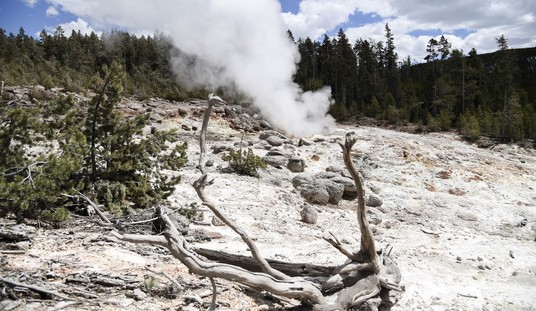Remember jatropha? In 2007, Goldman Sachs called it one of the best candidates for future biofuels. Time Magazine touted its promise in an article from January, 2009:
Renewable energy, it turns out, does grow on trees. The fruit pods plucked from jatropha trees have seeds that produce clean-burning diesel fuel. But unlike corn and other biofuel sources, the jatropha doesn’t have to compete with food crops for arable land. Even in the worst of soils, it grows like weeds. Sound too good to be true? …
If President Barack Obama’s green-energy rhetoric is on the level, this should be the year the U.S. gets clued in to what much of the rest of the world is already betting: that jatropha, like other nonfood sources such as algae, will revive a biofuels movement battered of late by charges that it diverts too many crops from too many mouths. India has set aside 100 million acres for jatropha and expects the oil to account for 20% of its diesel consumption by 2011. Australia, China, Brazil and Kenya have also embraced it. In December, a Boeing 747 was successfully test-flown by Air New Zealand using a 50-50 blend of jatropha and aviation fuel.
A Boeing 747? Cool. But it’s 2011; so how has jatropha worked out?
One of my favorite websites, WattsUpWithThat.com has a blog post entitled “The extraordinary collapse of Jatropha as a biofuel”, which links to this source in the Journal of Environmental Science and Technology.
…[T]he results are anything but encouraging. In India the provisions of mandatory blending could not be enforced as seed production fell far short of the expectation and a recent study has reported discontinuance by 85% of the Jatropha farmers. In China also until today there is very little production of biodiesel from Jatropha seeds. In Tanzania the results are very unsatisfactory…
Though acclaimed widely for its oil, Jatropha was never considered economically important enough for domestication and its seed and oil productivity is hugely variable. The species indeed grows wild in many semiarid habitats of low productivity but the lack of moisture and nutrition is invariably reflected in its seed production. The flowering season and number of flowering events, and male to female flower ratio in Jatropha is dependent upon soil fertility and available moisture, and temperature and these factors affect the production of seeds. …
These observations are, however, nothing out of ordinary and should have been anticipated by the Planning Commission of India, the powerful apex body that decides national priorities and allocates funds for them, before taking up such a continent sized program involving millions of low income farmers. But the Commission may have relied too heavily on the opinion of one of its top functionaries, who expected an internal rate of return ranging from 19 to 28% across India. National planners’ enthusiasm for the species rubbed off easily on research organizations and Universities that rely heavily on the Planning Commission for funding and some of these institutions themselves became partners in raising Jatropha plantations.
It appears to be an extreme case of a well intentioned top down climate mitigation approach, undertaken without adequate preparation and ignoring conflict of interest, and adopted in good faith by other countries, gone awry bringing misery to millions of poorest people across the world. And it happened because the principle of “due diligence” before taking up large ventures was ignored everywhere. As climate mitigation and adaptation activities intensify attracting large investments there is danger of such lapses becoming more frequent unless “due diligence” is institutionalized and appropriate protocols developed to avoid conflict of interest of research organizations.
To recap, through a powerful combination of wishful thinking, arrogance and institutional pig-headedness, subsistence farmers across the Third World were duped/coerced into planting an invasive weed which promised rates of return from 19 to 28%!, (assuming achievement of optimum crop yields, few or no pests, high sustained energy prices, etc.). Turns out that was, um, a mite optimistic.
Yes, every alternative should be on the table. But we need to be realistic about what those alternatives represent. It is one thing to demonstrate the promise of a new technology in a laboratory setting; it’s quite another to assume it is immediately and effortlessly scalable to impact our nation’s habit of consuming 19 million barrels of crude oil per day.
Until the day comes that an alternative proves its merit, we’d best face the fact that we’re dependent on hydrocarbons whether we like it or not. Wishin’ and hopin’ aren’t going to change that.
Also in the “It’s Not Easy Going Green” series: switchgrass biomass, clean coal (carbon sequestration), and electric cars.
Cross-posted at stevemaley.com.













Join the conversation as a VIP Member